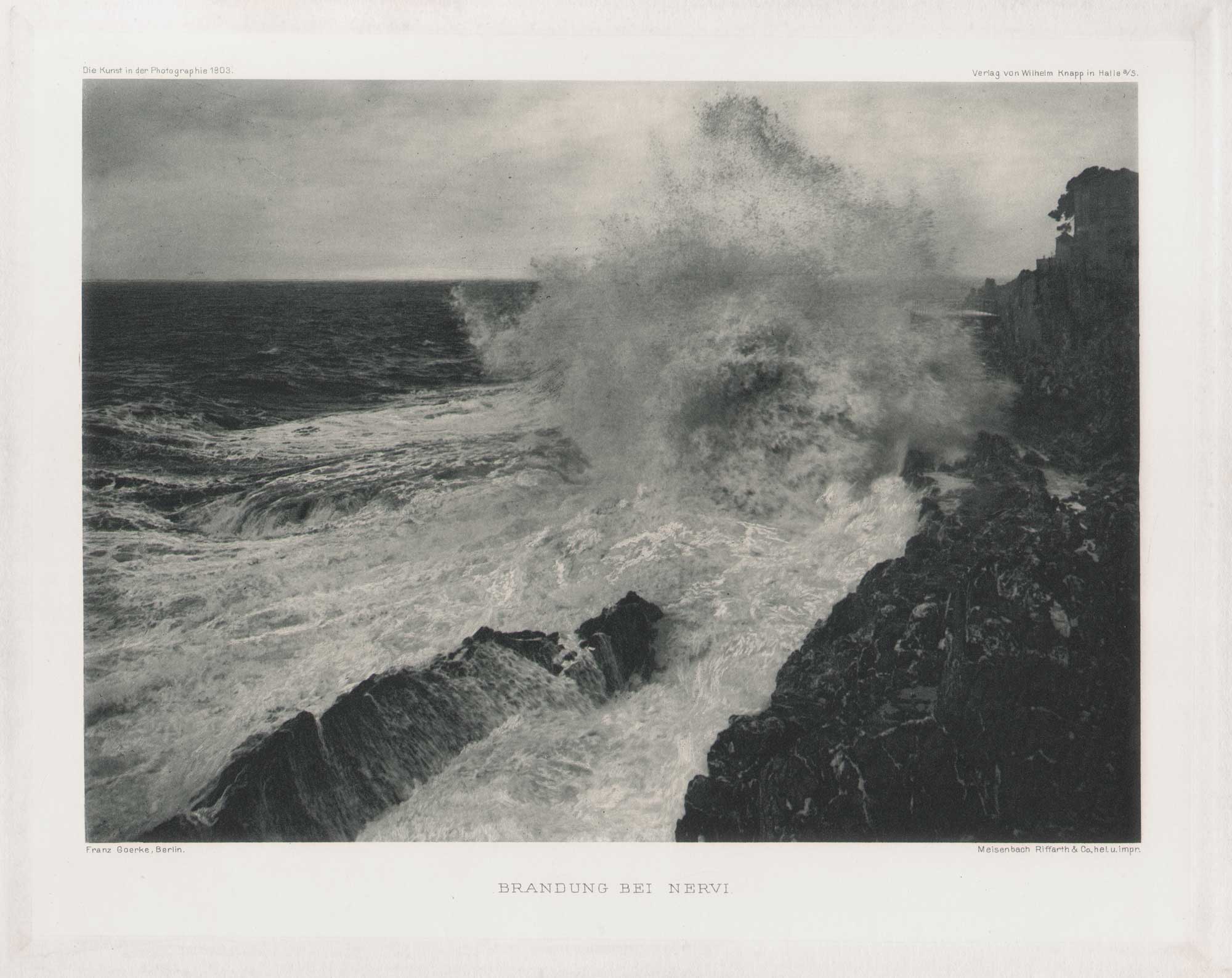
Brandung bei Nervi | Surf at Nervi
Waves pound the shoreline at Nervi, in northwest Italy. Photographer Franz Goerke may have taken this photograph in the Fall of 1898, when he is known to have been photographing in Italy as part of a pilgrimage to the Holy Land for the inauguration of the Church of the Redeemer in Jerusalem.
Nervi is a former fishing village 12 miles (19 km) northwest of Portofino on the Riviera di Levante, now a seaside resort in Liguria, in northwest Italy. Once an independent comune, it is now a quartiere of Genoa. Nervi is 4 miles (7 km) east of central Genoa. -Wikipedia (2024)
Franz Goerke: 1856-1931
Franz Goerke was, among other things, an editor, photographer, director of the Urania Society and a founding member and chairman of the Free Photographic Association . The aim of his pronounced commitment to the use of photography in the (natural) scientific field was both to establish a visual education concept and to increase the reputation of amateur photography .
Goerke’s involvement in the Free Photographic Association
In 1889, Goerke founded the Free Photographic Association with 52 other members . The first chairman was Privy Councillor Gustav Fritsch , the second chairman was Staff Doctor Pfeiffer and the first secretary was Franz Goerke. After Privy Councillor Fritsch and Privy Councillor Adolf Miethe , Goerke was elected chairman of the association in 1912. One of the tasks of the association was to “gather the easily fragmented workforce and bring it into effect in certain directions”. The focus here was on local history and heritage protection, in which the association saw many tasks to be solved by photography. Goerke organized scientific conferences, published articles on slide projectors (1891, 1892) and campaigned vehemently for the cultural legitimacy of amateur photographers. He maintained contact with scientific institutes in particular, in order to promote science and an enlightened public as much as possible. In order to reach a large audience, Goerke introduced projection evenings, some of which were attended by around 300 spectators. Goerke himself organized many of these evenings with his own lectures. Through these events, Goerke became the heart of the system of Berlin’s upper class society. His commitment was greatly appreciated, as he gave the institutions and a large audience the opportunity to exchange ideas. From 1899, a sample collection was created in which members were to have the opportunity “to draw inspiration for their own work from the achievements of others in peace and quiet.” However, as the progress was so great and the exhibitions at home and abroad were so numerous that they exceeded the scope, the photographic works were transferred to the library of the Free Photographic Association
“The Art in Photography”
Between 1897 and 1908, Goerke published 66 independent art sheets under the name “Die Kunst in der Photographie,” in which images by amateur photographers such as Hugo Henneberg and Alfred Stieglitz were published. Looking back, Rolf H. Krauss wrote about these art sheets: “This publication may well be the most important and valuable documentation of art photography in the German language but, because of its rarity, has remained virtually unknown.” From 1897 to 1903, six issues were published per year. From 1904 to 1907, the art sheets were published quarterly. The last year included eight independent issues. The publications were not bound, but were held together with thin cardboard. The art sheets contained a comparison of text and images in the front section. In the back part there are only the large-format heliogravures, double-chromatic gum prints and oil prints that are characteristic of the art photography movement. Goerke’s foreword states that the content of the first year was dedicated to the Camera Club in Vienna, the Berlin clubs , the Photo Club in Paris, the Association de Belge de Photographie and the Linked Ring . A lively exchange between the clubs was important to Goerke. -Wikipedia (2024) continues



